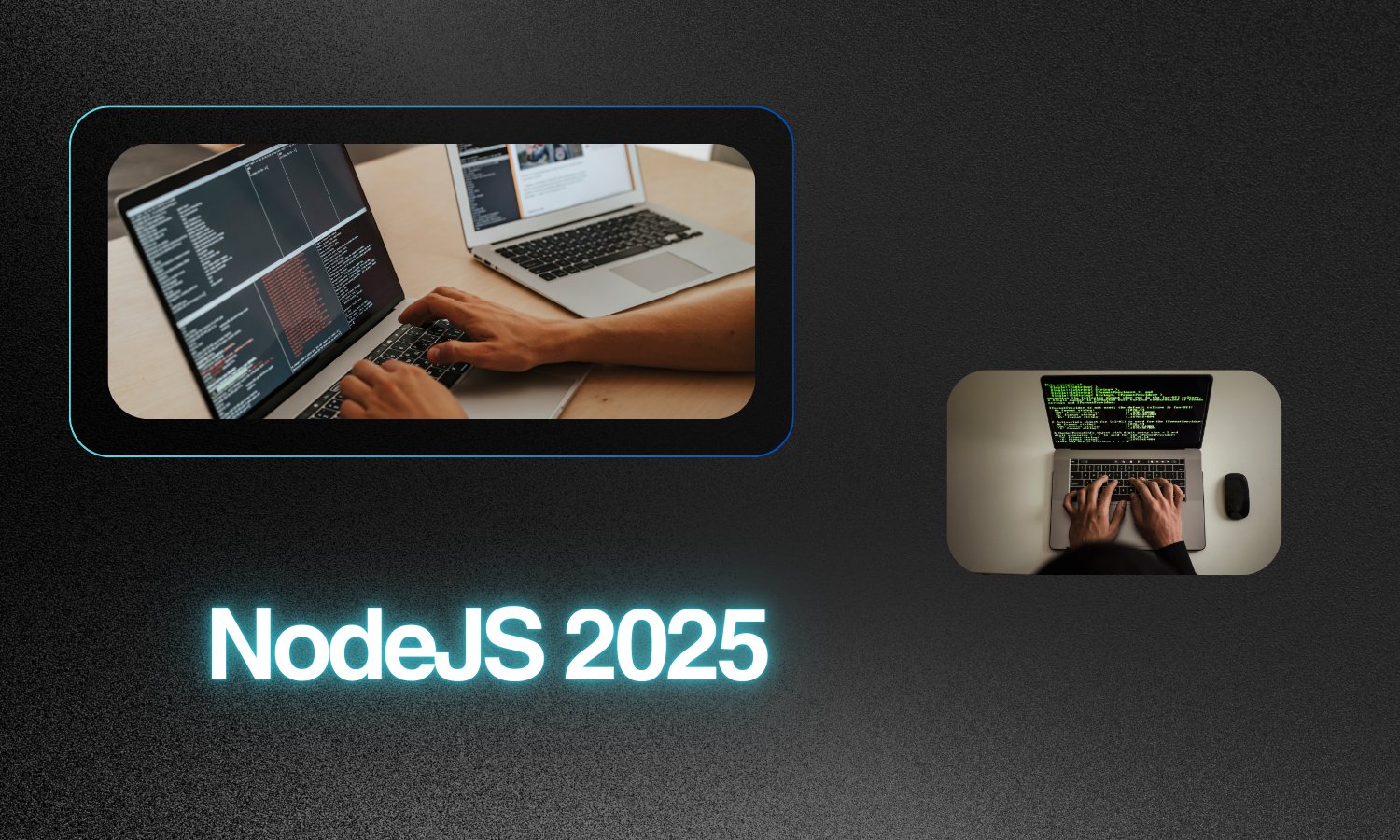Embracing Node.js 24’s Built-In Tools for Security and Productivity: A 2025 Guide
By hungpd, at: Aug. 3, 2025, 3:56 p.m.
Estimated Reading Time: __READING_TIME__ minutes


1. Introduction
Node.js 24, released on May 6, 2025, brings a suite of powerful built-in tools that enhance security, developer productivity, and backend capabilities. With native support for advanced JavaScript features, improved performance, and streamlined APIs, Node.js continues to evolve for reducing reliance on external dependencies while closing the gap with competing runtimes like Deno and Bun.
2. Why These Built-In Tools Matter
-
Security & Simplicity: Integrating features such as permissions directly into the runtime reduces dependency bloat and lowers the attack surface.
-
Ecosystem Momentum: With Deno and Bun pushing forward, Node.js is under pressure to modernize, and version 24 delivers.
-
Developer Experience (DX): Upgrading V8, improving
AsyncLocalStorage, and including native APIs like URLPattern and RegExp.escape simplify workflows and streamline coding practices.
3. The Key Features in Node.js 24
3.1 Stable Permissions Model (--permission)
What was previously experimental in Node 20 now enters stability in Node 24, meaning it’s ready for production. The command-line flag has been simplified from --experimental-permission to --permission . This model enables runtime constraints over file system, network, and environment access, aligning Node with modern, security-conscious runtimes.
3.2 V8 Engine Upgrade (v13.6)
Node.js 24 ships with V8 13.6, bringing a wealth of modern language features:
-
RegExp.escape()for safely escaping regex patterns
-
Error.isError()for accurate error detection across realms
-
WebAssembly Memory64 support for >4 GB allocation (with performance trade-offs)
-
Float16Arrayfor compact floating‑point data storage
-
Resource management via using and await using .
These updates enrich developer tools for writing safer, leaner, and more modern code.
3.3 HTTP & Networking: Undici 7 and fetch Compliance
Node.js 24 updates its HTTP client (Undici) to version 7, delivering enhanced connection pooling, better HTTP/2 support, and up to 30% faster requests, benefiting performance-critical applications . Compliance with the Fetch API specification is stronger, reducing the need for polyfills.
3.4 AsyncLocalStorage Performance Improvement
By default, Node.js 24 now uses AsyncContextFrame under the hood for AsyncLocalStorage. This yields better performance and reliability, particularly for distributed tracing or request context propagation in complex systems .
3.5 Globals: URLPattern Becomes Native
Node.js 24 makes URLPattern globally available, removing the previous requirement to import it from 'node:url' . This simplifies routing and URL matching in server-side code.
3.6 npm 11 Upgrade
Node.js now includes npm 11, featuring faster installs, enhanced security, and better compatibility with modern packages. Commands like npm init have improved prompts, and --ignore-scripts now consistently applies to all lifecycle scripts including prepare .
3.7 Test Runner Enhancements
The node:test runner gains improvements in Node.js 24, especially around subtest handling, Node 24 now auto-waits on nested tests, preventing cryptic “test did not finish” errors .
4. Real-World Code Usage Examples
A. Using the Permissions Model
node --permission --allow-fs-read=./data --allow-net=api.example.com server.js
This ensures your app can only read from ./data and communicate with api.example.com, effectively sandboxing runtime behavior.
B. Modernizing Regex Escaping
const userInput = '.+*?()';
const safeInput = RegExp.escape(userInput);
const pattern = new RegExp(`^${safeInput}$`);
Use RegExp.escape() to prevent regex injection or syntax errors. Node.js 24 makes this a first-class citizen.
C. Efficient HTTP Calls with Undici 7
const res = await fetch('https://api.example.com/data');
With improved HTTP performance and better fetch compliance, this works more efficiently—no need for Axios or node-fetch.
D. Cleaner Tests Without Manual await
import test from 'node:test';
import assert from 'node:assert';
test('math', (t) => {
t.test('2+2=4', () => assert.strictEqual(2 + 2, 4));
t.test('1+1=2', () => assert.strictEqual(1 + 1, 2));
});
Node.js 24 auto-waits the sub-tests, eliminating boilerplate await statements and making tests cleaner.
5. Impact on the Ecosystem & Developer Workflows
-
Security & Stability: Built-in permissions improve sandboxing while reducing reliance on unmaintained packages.
-
Performance Gains: Native HTTP, storage optimizations, and improved engine features boost both server-side and CI environments.
-
Reduced Boilerplate: Fewer external utilities like polyfills or test runners, means simpler builds and fewer version conflicts.
-
Community Evolution: With features now in core, lesser-used utility packages may fade; maintainers can focus on higher-level tooling.
6. Benefits vs. Trade-offs
| Feature | Benefits | Trade-offs / Cautions |
|---|---|---|
| Permissions Model | Runtime sandboxing for FS, network, and env; reduces risk from compromised dependencies. | Requires policy design and team training; verify compatibility of packages expecting broad access. |
| V8 13.6 Enhancements | Modern APIs (e.g., RegExp.escape, Error.isError), Float16Array, cleaner resource management with using. |
Certain features (e.g., Wasm Memory64) can have performance or memory overhead; re-benchmark critical paths. |
| Undici 7 & Fetch | Faster, more spec-compliant HTTP; fewer polyfills; simpler client code with native fetch. |
Behavior differences vs. legacy clients (Axios/node-fetch) may surface; update retries, timeouts, and interceptors. |
| AsyncLocalStorage Updates | Improved performance and reliability for request context propagation and tracing. | Revalidate custom instrumentation and middlewares; subtle behavior changes can affect edge cases. |
node:test Runner |
Zero-config tests; better subtest handling; tighter integration with Node’s module system. | Fewer batteries than Jest/Vitest (snapshots, rich mocks, ecosystem plugins); migration may require minor rewrites. |
7. Best Practices for Adoptation
-
Upgrade Gracefully: Adopt Node.js 24 in development first. Use LTS once it transitions (projected October 2025) .
-
Audit Dependencies: Remove or refactor packages replaced by built-in APIs.
-
Benchmark & Profile: Test HTTP performance, AsyncLocalStorage, and startup times before/after upgrading.
-
Update Documentation: Teach team members to use native features like RegExp.escape, float16Array, or --permission.
-
Monitor Behavior: Especially for Memory64 or fetch(), track error surfaces and network behavior after upgrade.
8. Conclusion
Node.js 24 is a watershed release, fusing modern JavaScript features, HTTP performance, diagnostics improvements, and a stable permissions model. These enhancements reduce friction, elevate security, and sharpen performance. The best time to explore and adopt these new features is now.
Call to Action: Try replacing one external dependency in your project (e.g., ws, nodemon, or regex utils) with a built-in alternative in Node.js 24. Compare simplicity, performance, and maintainability. Then, take notes - your findings could inspire the next blog post or internal tooling guide!



![[TIPS] Quick Tips for Contributing to Open Source Repositories](/media/filer_public_thumbnails/filer_public/2d/c5/2dc56d35-6bfd-4d56-92a7-5c847b442d86/repository_contribution.png__400x240_q85_crop_subsampling-2_upscale.jpg)

